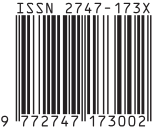Synthesis of C-Dots Based on Bitter Melon Peel using the Bottom UP Method
DOI:
https://doi.org/10.19184/cerimre.v7i1.47636Keywords:
Carbon Dots, Bitter Melon Peel, Bottom-upAbstract
There is an increasing demand for creative ways to turn garbage into useful resources as environmental sustainability becomes more and more of a global concern. Carbon dots can be synthesized using organic materials, one of which is bitter melon skin. The goal of this research is to create an economical and environmentally friendly process for creating carbon dots from organic waste. The bitter melon peel synthesis process uses a bottom-up method with microwave techniques. Furthermore, c-dots were characterized using a UV-Vis spectrophotometer to determine the absorbance value and wavelength and FTIR (Fourier Transform Infra-Red) to determine the functional groups contained in the sample. The UV-Vis spectrophotometer characterization results obtained an absorbance value of 3.311 and a wavelength of 206 nm. FTIR results show the presence of O-H and C=C functional group bonds indicating that this synthesis process has been successfully carried out.
Keyword: Carbon Dots, Bitter Melon Peel, Bottom-up








